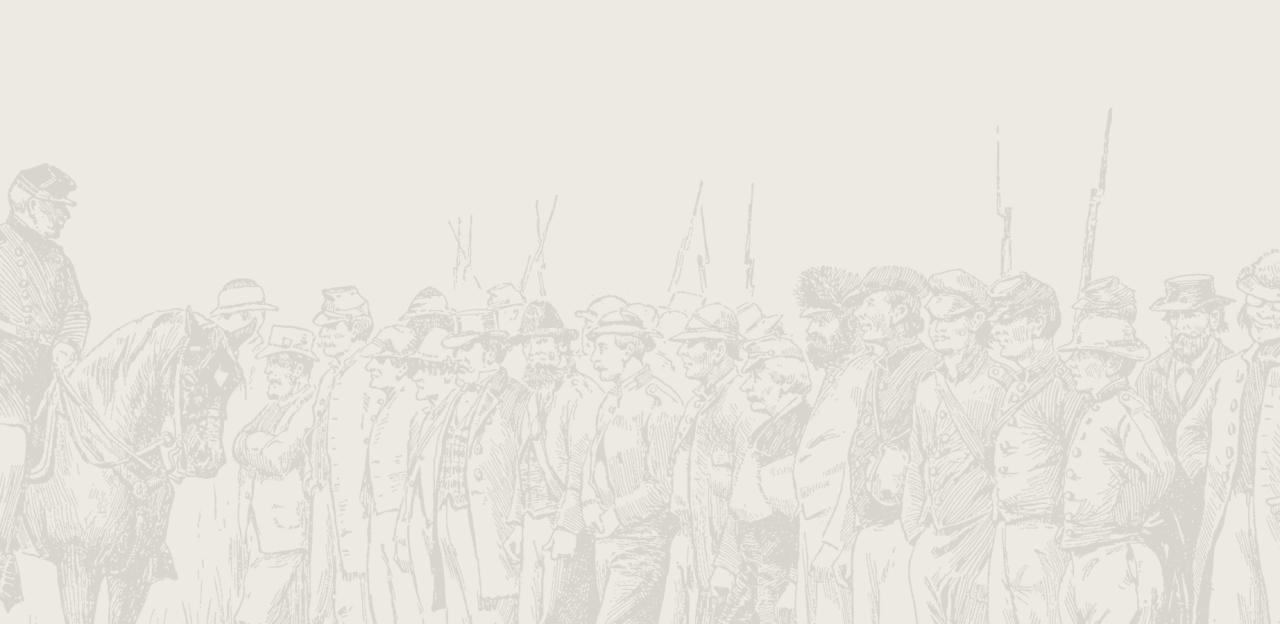Spotsylvania Court House

The Battle of Spotsylvania Court House
On May 7, Lieut. Gen. Ulysses S. Grant issued orders for the Army of the Potomac to march toward Spotsylvania Court House, a small village where the Brock Road met the road to Fredericksburg. Grant hoped to get between Gen. Robert E. Lee's army and Richmond or, at the very least, to draw the Confederates into the open where he could take advantage of superior Union numbers. It was Confederate Gen. J.E.B. Stuart's job to prevent the Federals from reaching Spotsylvania. For two days, a division of Stuart's cavalry, led by Fitzhugh Lee battled Union horsemen for control of the Brock Road. Forced to relinquish his position near Todd's Tavern, Lee withdrew to a rise of ground known as Laurel Hill, on the south side of the Brock Road, on May 8. Laurel Hill was the last defensible position north of Spotsylvania: if the Confederates lost the hill, they would also lose the crossroads at the court house.
Fortunately for Stuart and Fitz Lee, help was near at hand. Maj. Gen. Richard Anderson, now in command of Lieut. Gen. James Longstreet's First Corps, had marched for Spotsylvania during the night, and by the morning of May 8, his troops were within two miles of Laurel Hill. Anderson's corps had just gone into bivouac near the Po River when one of Stuart's couriers arrived warning him of the Union army's approach. The new corps commander instantly put his troops back on the road and let them toward Laurel Hill.
Believing Spotsylvania to be within his grasp, Union Maj. Gen. Gouverneur K. Warren advanced his V Corps up to the hill where they were surprised to find Anderson's corps opposing them. Warren's attempts to drive the Confederates were rebuffed with heavy losses and the two sides began to entrench. During this fight, Maj. Gen. John Sedgwick, commander of the Union VI Corps, was shot dead, becoming the highest-ranking Union officer killed during the war.
Grant tried to break the deadlock at Spotsylvania over the next two days. On May 9, he sent a portion of Maj. Gen. Winfield S. Hancock's II Corps across the Po River to find Lee's left flank. Spying Hancock's move, Lee shifted two divisions to counter the Federals at Block House Bridge, forcing the Yankees back across the river. Grant spent May 10 probing Lee's line for weaknesses, and nearly found one, when a young colonel named Emory Upton briefly breached the Confederate line with a tightly packed, fast-moving column of 12 regiments. Though Upton's assault was indecisive, it gave Grant an idea.
By May 12, the Confederates had established a long line of earthworks, which included a huge half-mile bulge, or salient, called the “mule shoe” because of its shape. Basing his plan from Upton's attack, Grant massed 20,000 men of the II Corps opposite the tip of the salient. Lee noted the Federal movement, but mistakenly believing that Grant was preparing to withdraw, removed his artillery from the area. Thus, when Hancock's men advanced on the morning of May 12, they struck the Confederate line where only infantry remained. After an initial breakthrough, Lee shifted reinforcements into the salient just as Grant hurled more troops at the Confederate works. Fighting devolved into a horrific, hand-to-hand, point-blank slugfest—amid a torrential downpour—which lasted for 22 hours and claimed roughly 17,000 casualties. The area would forever after be known as the “Bloody Angle.”
The stubborn stand by Confederates at the Bloody Angle gave Lee the time he needed to construct a new line of earthworks across the base of the salient. The Army of the Potomac, exhausted from its attacks, did not test the new line—at least, not right away. Instead, Grant slid his army to the left, followed by Lee sliding to his right. For three days, both sides consolidated their new lines. When Grant attacked Lee’s new position early on May 18, they were met by massed artillery fire and easily repulsed. Stymied but undaunted, Grant called off the attack.
Believing it best to continue moving his army to the southeast, on May 19 Grant ordered Hancock to pull back the II Corps toward the Fredericksburg Road. Observing the movement, Lee sent Richard S. Ewell’s Second Corps forward as a reconnaissance in force to determine where the Yankees were going. Ewell’s men ran into stiff resistance by a brigade of new heavy artillery-turned-infantry regiments at the Harris family farm. The new “Heavies” overmanned Ewell’s understrength brigades and turned back their probe.
The next evening, both sides pulled out of their Spotsylvania defenses and moved south and east toward the North Anna River. Casualties from both sides over 12 days of fighting totaled over 30,000 men, with Grant losing 18,000 men and Lee losing around 12,000. The Overland Campaign and the bloody casualty lists associated with it would continue.


